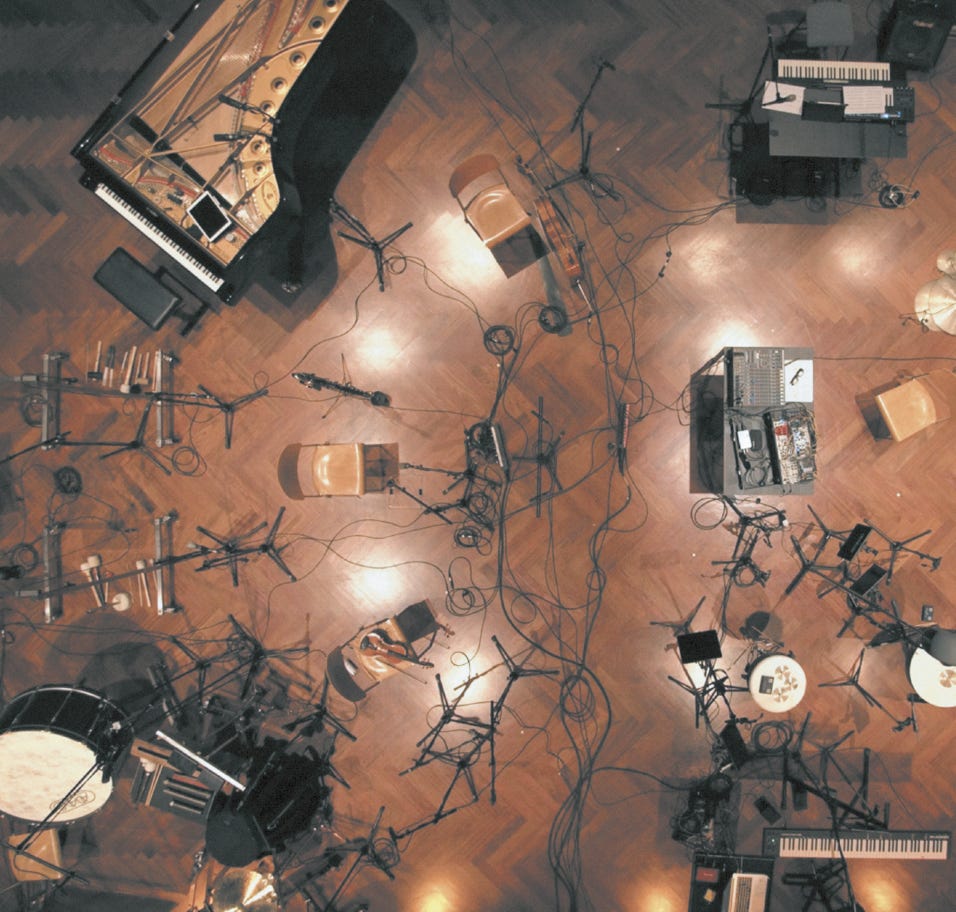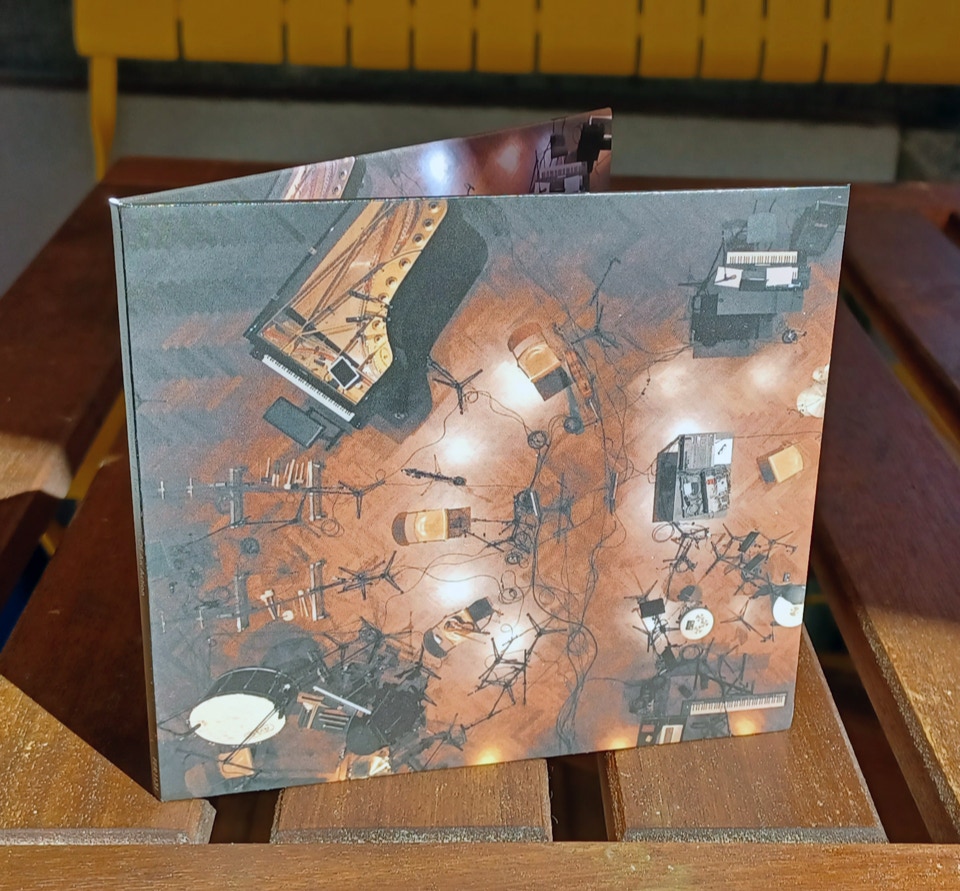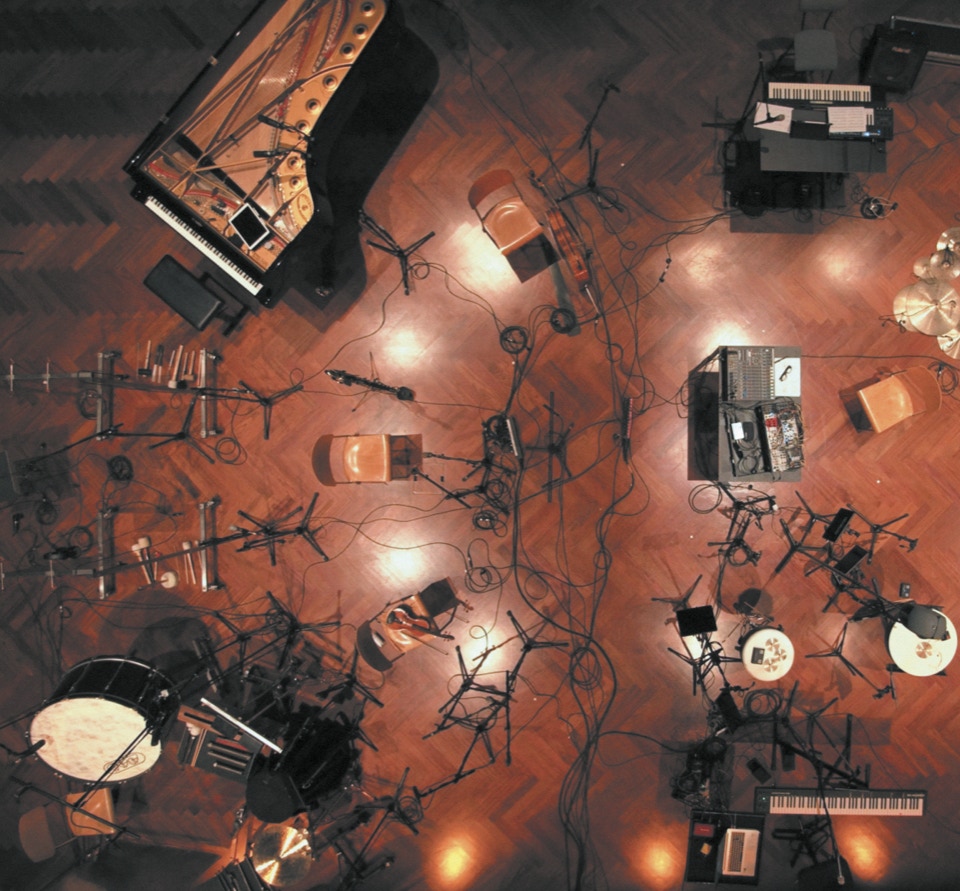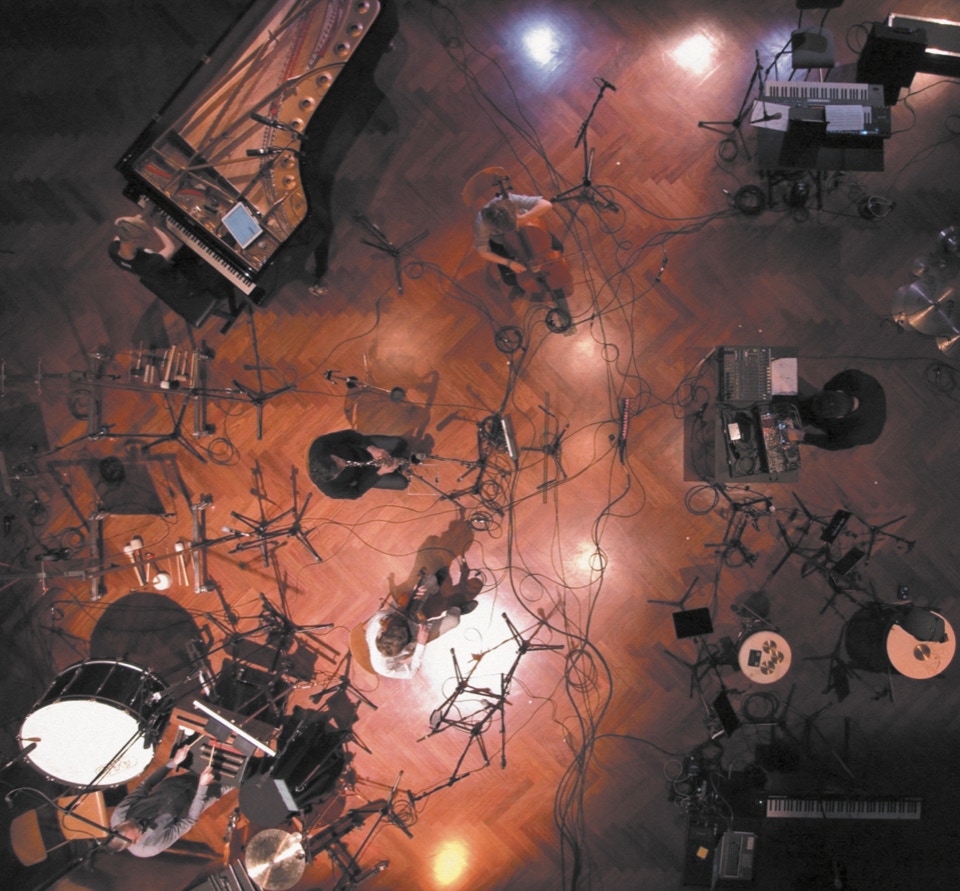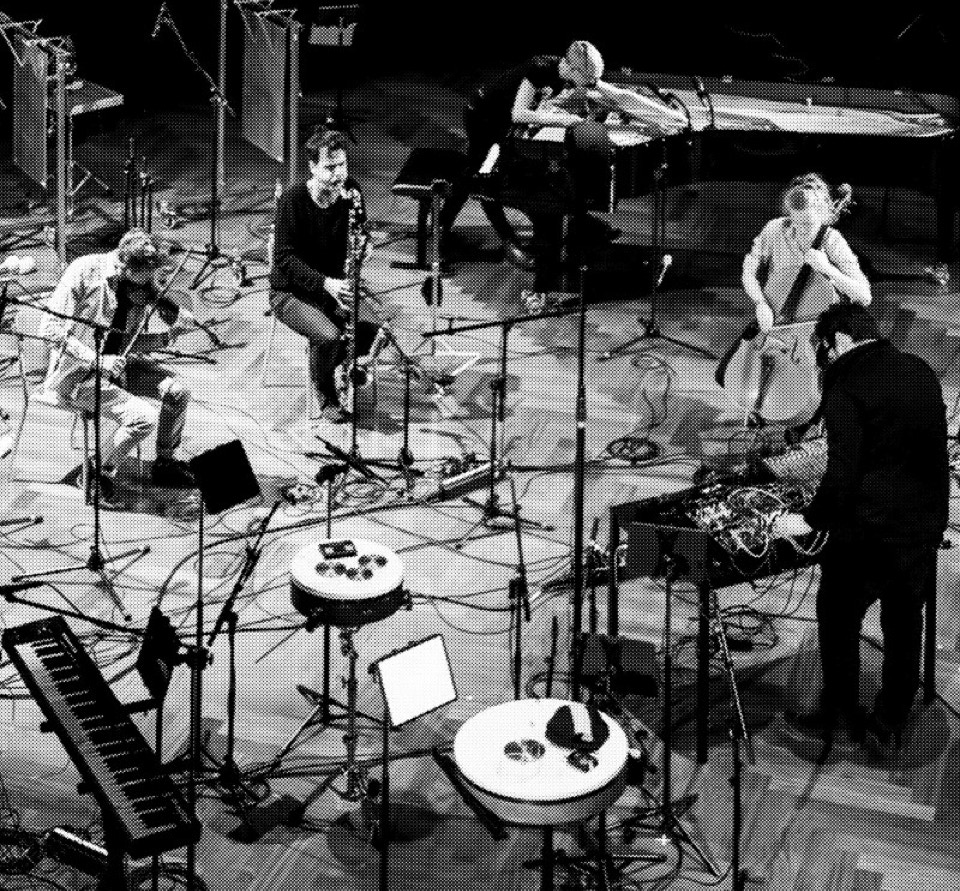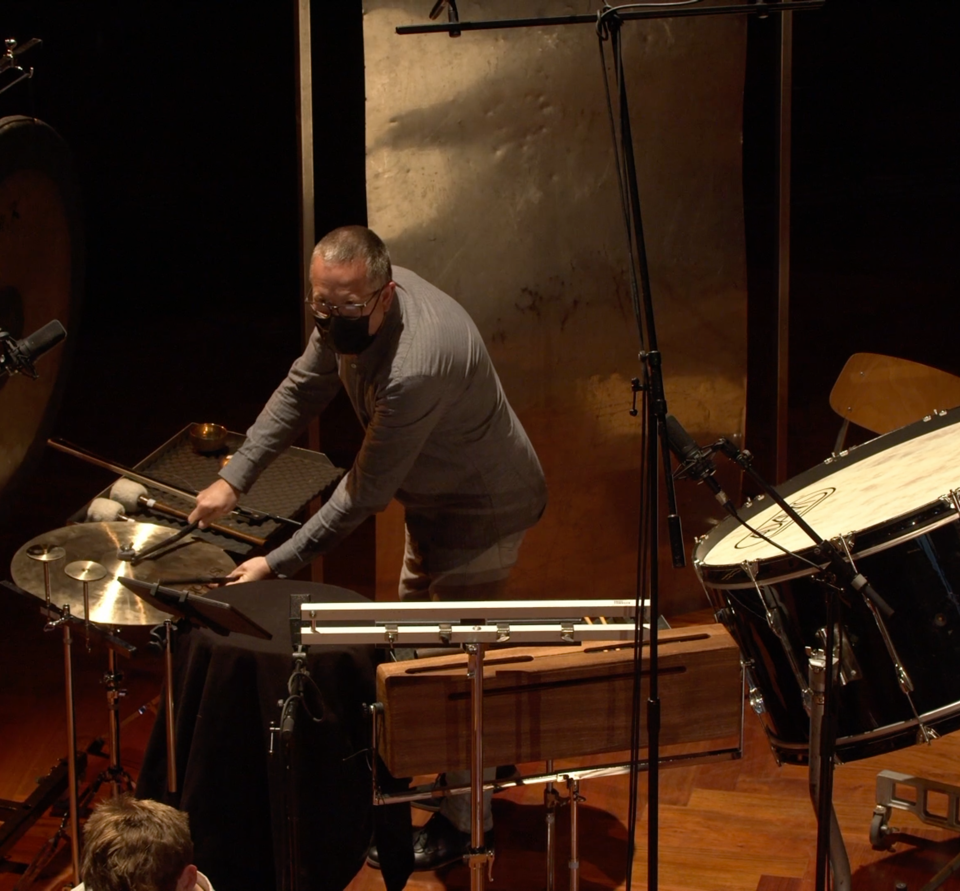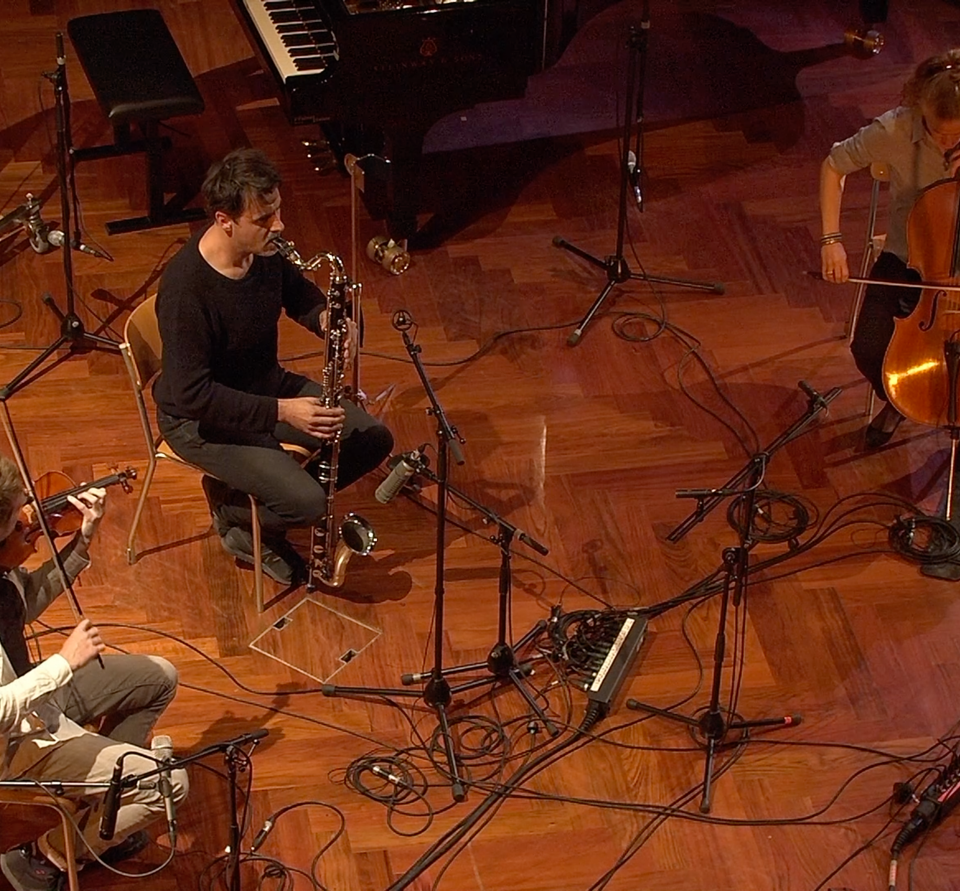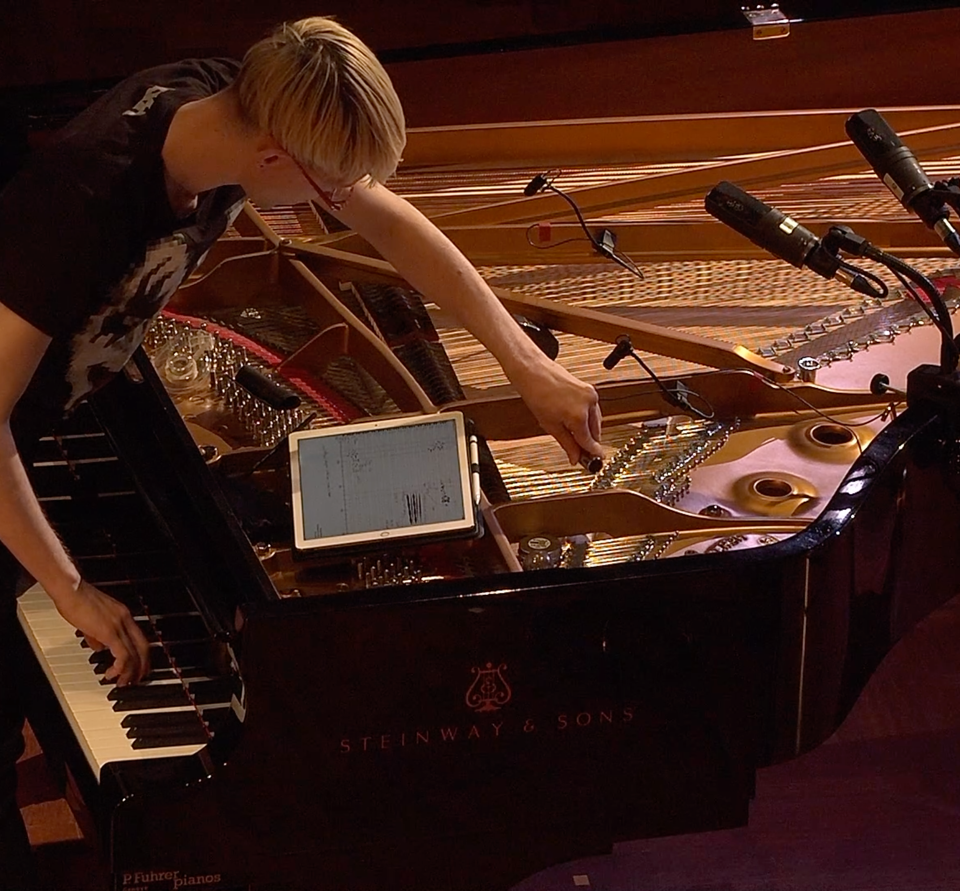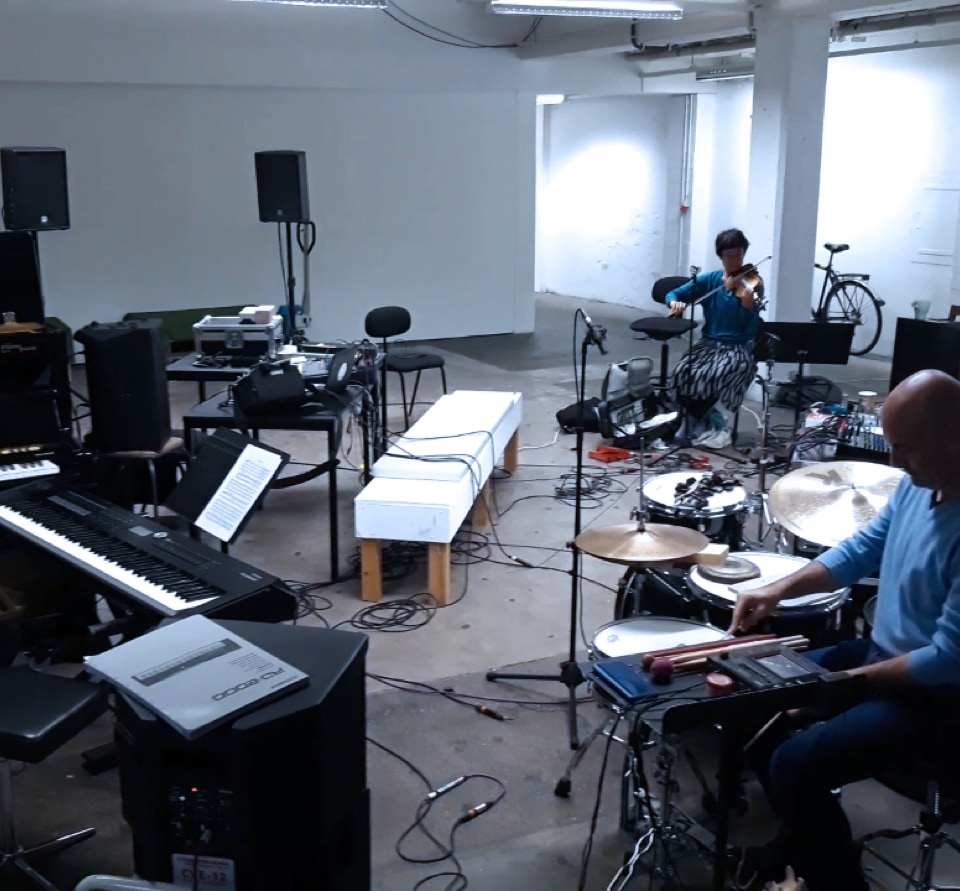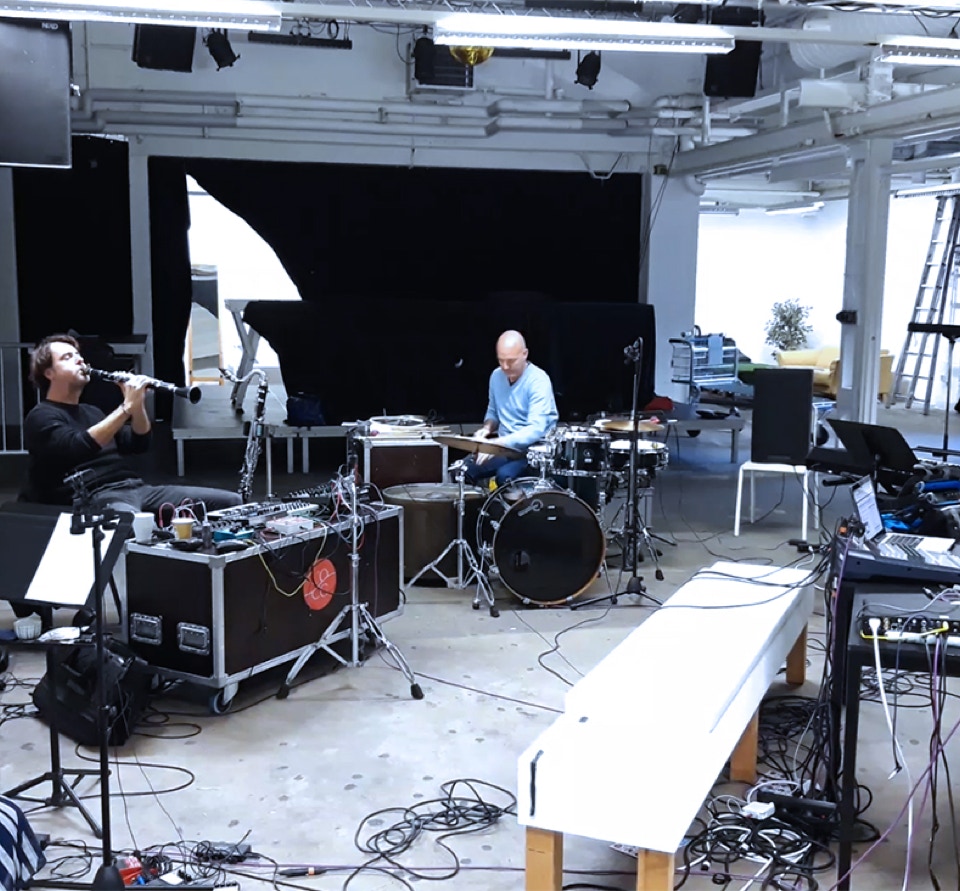REVIEWS
In the New Noise
What are the tensions and dynamics that structure an improvised performance when there are multiple players? There is always a sound ecosystem, human and inhuman, to consider. There is the acoustic wave itself, with its timbral and frequency characteristics, capable of evoking infinite emotional nuances in the listener or listener. There are the instruments, inanimate objects with which we can relate in a unidirectional sense, using them for the representation of a score, or allowing them the freedom to retroact us, manifesting themselves in their "will." Last but not least, there are the others, the others: they may generically belong to the "audience" category or to the "performer" category, or to both at the same time. In the progression of the artistic act, of the concert, each element has a certain responsibility in relation to the others, but it is still true that it is the relationship between the individual subjects, let us say "in the flesh," that arouses the greatest interest and has historically attracted the attentions of those who write and reflect on music. How do artists and performers shape the sonic magma of possibilities into something aesthetically coherent? The answer-reflection of Ensemble Contrechamp together with Francisco Meirino revolves around the concept of imitation. It is no coincidence that the disc born from the collaboration between these two entities is called "The Imitation Of An Action."
The Swiss artist needs no introduction by now, being a welcome and frequent guest among these pages. As for Ensemble Contrechamp, we could call it a collective experience, founded in Geneva some 40 years ago now, focused on the performance of contemporary and experimental music, through concerts, installations, workshops and collaborations with distinguished composers of this and the past century.
The idea of the disc is to force an imitation between acoustic instruments and electronic vibrations, narrowing the field of infinite possibilities through a common framework defined by a graphic score (which can be found on Meirino's website and whose consultation is highly recommended during listening).
The result is fascinating both if the approach is naïve, without the reflections around the concept of repetition and imitation, and having a clear understanding of the project in its entirety. The sonic spectrum that Meirino has already accustomed us to in his solo journeys expands throughout and occupies a natural place in the group's ecosystem. In retrospect perhaps it is precisely the relationship with otherness, a concept somewhat elusive in solo records, that enhances and magnifies the Swiss artist's aesthetic. On the other side of the mirror the acoustic instruments of Ensemble Contrechamp really behave and sound like an electronic representation of themselves, particularly the woodwinds and strings, so much so that one often has the acousmatic feeling of being in front of a sound without a source, without a body. Which is interesting in relation to what was said earlier: sure, there is a boundary, an arbitrary line drawn on the possibilities and defined by a score (however sui generis and freely interpretable) but we are still talking about a self-propelled architecture, made from living material, with an unintelligible will that can manifest itself through sound epiphanies even beyond the established boundaries. A case in point are the phantasmic vibrations of bodies and acoustic instruments prompted by Meirino's frequencies, in a phenomenon of unrepeatable feedback resulting from the combination of exquisitely contextual variables. The semi-control of "The Imitation Of An Action" is perhaps the key to addressing the album's aesthetics and to understanding the artist's mediating role between his own will, that of his peers and that, inescapable, of the material with which he relates, in a kind of collective experiment and, fortunately for us, released on record.
In Vital Weekly
Here we have another example of an electronic composer working with an ensemble for modern music. Something familiar ever since electronic music started, but in recent years also something that is an option for electronic music from what I call irreverent 'our lot'. Zeitkratzer worked with loads of these (John Duncan, Terre Thaemlitz, Carsten Nicolai, Zbigniew Karkowski) and in France various composers (Jerome Noetinger and Kasper Topelitz spring to mind). We have Swiss composer Francisco Meirino, who started as Phroq, working with Ensemble Contrechamps. This ensemble has a violin (two), cello, clarinet, percussions (two), and piano (two). Meirino plays the electronics; I am not sure if he is a fixed group member. (NOTE : I am not)
About the two pieces, he says that "these pieces are based on the idea of acoustic instruments imitating electronic sounds created by a live performer. The core, structure, and length of the pieces are defined by a graphic score that leaves room to the musicians for the imitation of those sounds." We often don't see the scores, but he has them online, which I find fascinating, to be honest. Not to check if they are keeping at the score, but to read the instructions and see how they are translated into the music I hear. Instruments and electronics intertwine intensely, so I sometimes have no idea what is what. There are two pieces, 'The Imitation Of An Action' and 'The Act Of Imitating', and while they have similar ideas, the execution is slightly different. There is quite a chaotic approach in the first, while there is more structure and building up and taking things down in the second. Oddly enough, the second is from 2019, the first from last year. That made me think something happened that everybody thought the more chaotic approach worked better? I don't know. Whereas there is some incredible intensity to admire there, I prefer the second one. That probably says something about me liking more structured music, but I believe the intensity is channeled here and has a more significant impact. There is intensity all around here, which works very well. (FdW)

